 Conventional Attack Submarines (S635, 636, 639, 640). Service 1957-1987:
Conventional Attack Submarines (S635, 636, 639, 640). Service 1957-1987:Aréthuse, Argonaute, Amazone, Ariane
French Cold War Submarines
La Creole class (1940) | Narval class (1954) | Arethuse class (1957) | Daphne class (1959) | Gymnote test SSBN (1964) | Le Redoutable SSBN (1967) | Agosta SSN (1974) | Rubis SSN (1979) | Amethyste SSN (1988) | Le Triomphant SSBN (started 1989)We continue our dive in cold war French submarines, with a second postwar conventional design, the Aréthuse class. Unlike the previous Narval class, designed as “sous-marins de patrouille” or patrol submarines, the Arethuse were the first “sous marins de chasse” literrally “hunting subs”. They were indeed designed for speed and underwater agility with a better sonar as usual and the most advance fire control system, as the admiralty wanted a pure hunter-killer submarine. As the concept was new only four were built, all at Cherbourg Arsenal between 1955 and 1958-60. They were also tailored for the Mediterranean, based at Mers el Kebir, Algeria, and hunting other submarines preying on French trade lines.
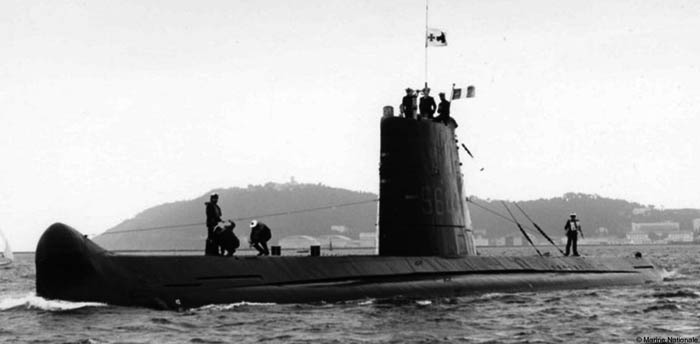
FS Ariane underway (seaforces.org)
The staff asked for a “100% submarine”, designed for extra manoeuvrability, deeper dive and faster overall underwater, notably maintaining full speed for one hour and operate under snorkel the rest of time, with extra silent. One key aspect was the choice for the best sonar tech of the time, and the best designed operation center. Many authors points out the influence of the Type XXIII design. Unlike the Narval, designed for long patrols they only had four bow tubes and one reload for each. They were also the first French submarines to adopt groups of turbogenerators instead of just diesels, with new SEMT pielstick diesels on a single shaft. For extra silence, the whole powerplant was placed on springs suspensions with rubberized attachments. They were discarded from 1979 to 1981, FS Argonaute being preserved in Paris as part of a museum.
Design of the class
The Aréthuse class were small attack submarines tailored for the Mediterranean with a small silhouette and great manoeverability. They could not be more different than the long range Narval built a bit earlier. The following specs would compare them.
Hull and general design
The Arethuse were much smaller than the Narval serie, with a standard displacement of 410 tonnes (400 long tons) light (empty), 552 t (543 long tons) surfaced, and 680 t (669 long tons) submerged. To compare the Narvals reached 1635t surface and 1910t submerged, thrice as much. They were short at 49.6 metres (162 ft 9 in) long, 5.8 m (19 ft) in beam for a draught of 4 m (13 ft 1 in). In contrast the Narvals were 78 meters long by 7.8 wide and 5.2 m draft (257 x 26 x 17 ft). They keep however the same basic sail design, which happened much larger here in proportion. It was also a bit narrower, with a sloped face, and more refined tail. Doors were located mid-way instead of forward also.
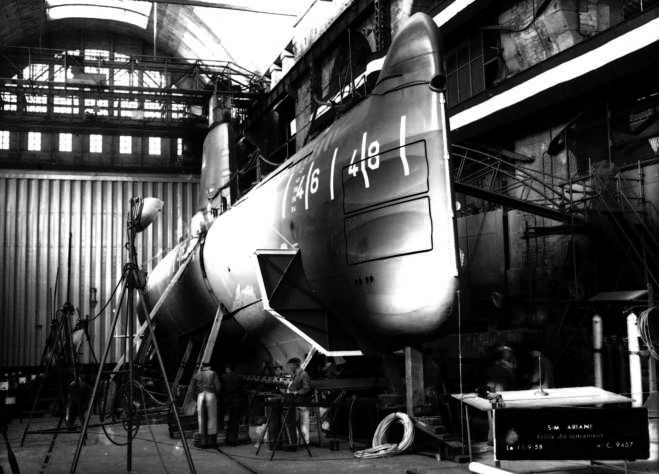
Arethuse prior to launch.
The submarine has two hulls, the inner one was 2.8 cm thick (0.8 in), housing the crew and the equipment and built to withstand enormous pressure of 1 kg/cm2 under 10 meters and at 200 meters 20 kg/cm2. On paper the pressure hull was designed to withstand pressure down to 400 meters. The outer hull, thin is a hydrodynamically profiled but has no sound reduction coating albeit water intakes are better profiled to reduce bubbles.
These were also among the first at that stage to have a single propeller. It was concluded that this would cause less turbulences than two shafts, and combined with a larger combined tail will give extra agility. It should be started that the USN also returned to single shafts with the USS Albacore in 1955. But the Arethuse hull design was very much a repeat of the Narval and Type XXIII, streamlined but in now way “teardropped”. The single shaft was not on the tail end of the hull, but rather in a classic cutout under the hull’s tail, with a “K”* shaped vertical stabilizer supported by a large keel tail with horizontal surface situated forward of the rudder and propeller. So this was a classic arrangement. *The rudder is not a typical flat plane, but has a double wave shape with a central cone. In any case the stern was shaped much like the German Type XX. Like on Type 209 submarines, there was a forward dive plane and one to submerge.
The forty crew members were crammed into a very small space, quite uncomfortable with the “warm bunk” system of two bunks for three. Fresh water was only allowed for drinking and cooking, in a three square meters galley. No wash authorized and single toilet. The was a well-equipped central post with the electrics and diesels behind. Twin deck, with a half deck below forward for the batteries, galley and stores behind, and auxiloary diving chamber. Single compartment for the torpedo rooms forward and diesels aft ending with a 6-bed rear berthing room and hatch above. The centrall on the upper deck was divided into the combat room with periscopes and officers berthing in front, then forward post with 12 berths. Bhing the CO was located the machinery control room and snorkel post with an officer of the watch, and radar operator. When combat stations are called, the small CO comprised 12 operators, captain and XO included. Food onboard only enabled a patrol of three weeks.
Powerplant
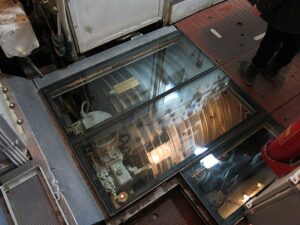 The Aréthuse class were the first French submarines with a diesel-electric propulsion system combining two 12-cylinder SEMT Pielstick diesel engines rated for 790 kilowatts (1,060 bhp) or 1060 bhp when surfaced. The single shaft ended with a modified 5-bladed screw propeller. The Arethuse also mounted two electric generators producing 337 kW (452 hp). They transitioned to the electric motor for more flexibility while submerged, the latter being rated at 970 kW (1,300 hp). The batteries had 160 elements for 60t.
The Aréthuse class were the first French submarines with a diesel-electric propulsion system combining two 12-cylinder SEMT Pielstick diesel engines rated for 790 kilowatts (1,060 bhp) or 1060 bhp when surfaced. The single shaft ended with a modified 5-bladed screw propeller. The Arethuse also mounted two electric generators producing 337 kW (452 hp). They transitioned to the electric motor for more flexibility while submerged, the latter being rated at 970 kW (1,300 hp). The batteries had 160 elements for 60t.
The generators were placed on spring suspensions while the motor was attached directly to the shaft for a near-silent operation while submerged. Top speed was lower than expected however at 12.5 knots (23.2 km/h; 14.4 mph) surfaced, 7 knots under snorkel (13 kph) under 12 m (39 ft) and 16 knots (30 km/h; 18 mph) submerged. To compare, the Narvals were capable of 16 knots surfaced (which was specified) and still 18 knots underwater based on 41400/51000 shp, so much more. They could dive at 200 m (650 ft) but range remains unknown. It was certainly lower than 4000 nm, rather around 3,500 nm compared to 15,000 nm for the Narval class. It was said however capable of reaching 20 knots underwater for one hour, to not overheat and deplete the elements.
Armament
The Aréthuse-class were too short for stern tubes and too narrow for six bow tubes. They only had four, with juste enough space for one spare torpedo each. She started her patrols with pre-loaded tubes. Unlike in other navies which embraced the 533 ot 21 inches standard, the French had 550 mm (21.7 in) torpedoes. These torpedoes were geared for anti-submarine warfare.
E14 acoustic Torpedo
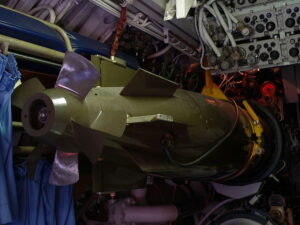 The Narval’s E12 was the first French passive homing torpedo, being launched with already a firing solution delivered within 770 yards (700 m) of the target, developed based from captured German models such as the T-5. It was electric, and range was priomordial over speed, with justy 25 knots.
The Narval’s E12 was the first French passive homing torpedo, being launched with already a firing solution delivered within 770 yards (700 m) of the target, developed based from captured German models such as the T-5. It was electric, and range was priomordial over speed, with justy 25 knots.
Later the shorter E14 was developed for the Arethuse class. The E15 was an export variant of the E12, and the E18 had an improved passive seeker head.
It’s likely they were upgraded to the F17 wire guided from 1973 onwards or the even L5.
In regular service, these subs carried the E14 or Z13.
The E14 entered service in 1960 and was a smaller version of the E12, tailored for the Arethuse class and modified at least twice in 30 years, swapping their silver-zinc batteries models and engines to double the range and increase the speed by 10 knots. They were also fitted with better seeker-heads and larger warheads.
⚙ specifications 55 cm E14
Weight 3,637 lbs. (1,650 kg)
Dimensions 4.28 m x 55 cm (168.5 inches long)
Propulsion Nickel Cadmium Battery
Range/speed setting 5,500 yards (5,000 m)/25.5 knots
Warhead 440 lbs. (200 kg) aluminium Tolite
Guidance Initial data, passive homing
Sensors
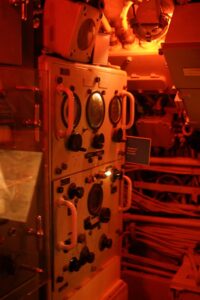 Calypso radar: Installed from 1964, Navigation and early warning radar, also called DRUA 33, 20 nm/37 km range.
Calypso radar: Installed from 1964, Navigation and early warning radar, also called DRUA 33, 20 nm/37 km range.
DUUA-1 sonar: No data found. Its projector was located on top of the nose forward under a fairing similar to the one on Narval (same sonar by the way) but the also had in the bow chin a passive hydrophone.
By 1981, the sonar was upgraded to active DUUA II sonar combined with the passive DUUA II sonar and passive ranging DUUX 2.
The DUUA II is an active search-and-attack sonar with search-and-attack functions performed simultaneously. It usable for passive detection, with a sonar interceptor locating the source of sonar waves and with depth sounding and ultrasonic deep-water communication system. Normal power 20 kW, 1 kW in reduced operation. Transmitting frequency 8.4 kHz o, 30, 300 or 500 pulse lengths.
The periscope “forest” was simplified, with a rear snorkel, a ladder tunnel towards the bridge’s deck and three periscopes forward, one watch periscope with radar, one radar detector and one attack persicope in that order.
Other equipments included the acoustic intercept receiving, folded to port, two hatches, forward and aft, a signal flares bin forward under deck (built in the outer hull), RISE bowplane, an a lower whip antenna mast forward.

Comparison between the Narval patrol subs and the Arethuse hunter-killers

⚙ specifications |
|
| Displacement | 552 t (543 long tons) surfaced, 680 t (669 long tons) submerged |
| Dimensions | 49.6 x 5.8 x 4 m (162 ft 9 in x 19 ft x 13 ft 1 in) |
| Propulsion | 1 shaft 2× 12-cyl. diesels 790 kW (1,060 bhp), 1 electric motor 970 kW (1,300 hp) |
| Speed | 12.5 knots surfaced, 16 knots submerged |
| Range | Est. c2500 nm |
| Armament | 4 × 550 mm (21.7 in) torpedo tubes (8 torpedoes carried) |
| Max depth | 400m (1312 ft) |
| Sensors | DUUA I sonar, DRUA 33 radar 1964 |
| Crew | 40 |
Career of the Arethuse class
 Aréthuse (S 635)
Aréthuse (S 635)
Aréthuse was laid down like her sisters at Arsenal de Cherbourg, Cherbourg, as Q236 on 9 November 1957, launched on 23 October 1958 and completed on April 1979. Acceptance was on May 21, 1958, and she carried out her sea trials on May 22 and 23 and June 5-7 1958. She made a shakedown from to Lorient and back and more trials June 25-26 then had fixes in Brest, then back in Cherbourg on July 3, 1958. By decision of January 7, 1958, she received the green banner with olive war cross 39-45 of her WW2 counterpart used by the FFL.
After her formal entry into service she was assigned on February 1, 1959 to the 1st submarine squadron and from 1958 to 1962, she was based in Mers el-Kébir (GSM 11). On June 14, 1959 she took part in a naval review. Aréthuse and Argonaute flnaking the flagship and being inspected by the Minister of the Armed Forces and Admiral Henry Nomy, CiC.
On February 17, 1961 she suffered a snorkel failure, ingressing some 10 tons of sea water, dumped into her forward station, taking an angle of 60-70°. The battery spilled acid and the electric propulsion motor caught fire but thjere was no injury the fire was quikly put down and she surfaced, headed home at DCAN Toulon followed by a major refit at Mers el-Kébir. She left Oran in June 1962 for Bizerte and some interposition during the crissis between Turkey and Greece. She was in Toulon on August 1962.
On July 14, 1962, she took part of Navy Day in Toulon, opened to the public. In 1963 Toulon became her new homeport. By February 1968 she stopped in Genoa. On 26 February 1971, she did the same with her sister Amazone in Monaco. From mid-1971 to the end of April 1972 she was in refit in Toulon.
On 11 February 1975 she sailed with four sisters for a family photo underway off Toulon. On October 23, 1980 she was placed in reserve, decommissioned as Q608 and sent to DTCN which tested torpedo lethality and naval structure resistance tests. In May 1982, she was placed 70 meters under floats as target for a torped tests, and on May 19, she was sunk off Toulon.
 Argonaute (S 636)
Argonaute (S 636)
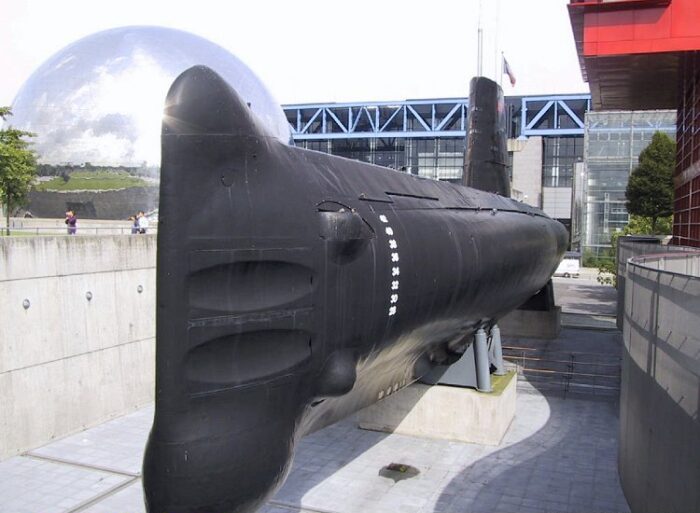
Argonaute was laid down in March 1955, launched on 29 June 1957, completed on 11 February 1959. On February 7, 1958 she made her first static dive in Napoleon III basin, had her endurance tests on February 20-22 with the electric propulsion and by February 27-28 and March 3-4 snorkel, then March 20 maximum depht test, March 22 maximum power while diving etc. Her torpedo tubes tests at sea were done on June 17-20 and she was accepted on July 3. On the 31st she left Cherbourg for her endurance cruise and shakedown cruise, stopping in Lisbon on August 9-12, Oran on August 15-18 entirely underwater. On August 22, 1958 she arrived in Toulon, assigned to the 1st submarine squadron and later assigned to GSM 11 at Mers el-Kébir. Until 1962 she carried anti-arms summling patrols during the Algerian War. On June 14, 1959 she was at the naval review and in 1963, reaassigned to the 1st ESM in Toulon. On June 1, 1963 she stopped at Port Vendres.
She was at navy days on July 20, 1975 and by May 1978, stopped in La Maddalena (Sardinia).
On July 14, 1982, upon returning from her naval review she was decommissioned. Placed in special reserve on July 31, 1982, she had cranked up 2,147 days at sea, 32,700 hours underwater, 210,400 nautical miles. Since 1982 she had been preserved at the museum in the Cité des Sciences et de l’Industrie in Paris.
 Amazone (S 639)
Amazone (S 639)
Amazone was laid down in December 1955 like Ariane, launched on 3 April 1958 and completed on 1 July 1959. From 1959 to 1963, she was based in Mers el-Kébir and had a major refit late 1960 until 1962. From 1963 she was based in Toulon, and her there a second major refit. She stopped in Alicante on July 26, Ajaccio on September 13 for the 20th anniversary of the landing in Provence (Anvil Dragoon). In 1966 in Toulon she had her first major modernization with new aft stabilizers and she would have another in the second half of 1969 until January 2, 1970. On February 26, 1971 she stopped in Monaco and in November, Cartagena.
Until April 1973 she was stationed in Toulon, being visited by the public on Navy day on July 20, 1975. She had her last major refit between 1976 to January 1977 in Toulon. With Argonaute she stopped in La Maddalena and Ajaccio, Cannes in September 1979, and decommissioned in Toulon in June 1980, after 158,000 miles, 29,000 hours unbderwater. On August 17, 1981, she was stricken as Q616, scheduled to be transferred for sale but June 25, 1985, this was canceled and she ended as target. In November 1988 she was transferred at the Vauban dock to be cannibalized for Argonaute, transformed into a museum. On August 9, 1989 she left Toulon for her target area off La Ciotat, to be sunk by a Makafon missile launched by Duquesne, while under 60 meters, sinking under 2000 meters. The sinking was delayed as she was at some point surrounded by whales…
 Ariane (S 640)
Ariane (S 640)
Ariane was laid down on December 1955, launched 12 September 1958, completed 16 March 1960. On March 27, she returned from trials between Brest and Lorient, to Cherbourg and on October 24, 1959 left Cherbourg for an endurance tour and shakedown to the North Sea, Wilhemshafen and Bergen and after fixes at Cherbourg, reached Toulon by December. She was assigned to the 1st submarine squadron (ESM). On June 1, 1960 she was sent to Mers el-Kébir and had a minor refit, going back to Toulon in 1962. No logs between 1962 and 1975.
On February 11, 1975, she made a “family photo” with her sisters at sea. On March 26, 1981 she made her last patrol carrying her 12 former commanders.
She was decommissioned on April 1, 1981, after 161,000 nautical miles at sea, 29,500 hours underwater.
Her hull is used for shock resistance tests by ASW grenades in 1985 under Q617 and also cannibalized. She was designated as target, placed by February-March 1984 in shock caisson in the experiment “Macumba” and survived. By May 25 1985, she became a static target under 55 meters in Giens harbour. A high-power charge exploded parallel to the hull at 8 meters to test resistance.
She was completely ripped open after this, and sank, later partially refloated for examination by nearly 30 divers. She was placed in shallow water at Saint Mandrier, Le Cannier, slowly rusting out sincve and a magnet for local divers, close to the diving school.
Note: No CC photos of all four boats, only Argonaute as museum.
Read More/Src
Books
Conway’s all the world fighting ships 1947-1995 p121.
Links
https://www.museumships.us/france/argonaute
https://www.netmarine.net/bat/smarins/arethuse/index.htm
https://www.seaforces.org/marint/French-Navy/Submarine/Arethuse-class.htm
https://www.researchgate.net/figure/Arethuse-Class-submarine-launched-in-1955_fig8_338621578
https://tripbucket.com/dreams/dream/see-french-submarine-argonaute-paris-france/
https://commons.wikimedia.org/wiki/Category:Argonaute_(S636)
https://www.navypedia.org/ships/france/fr_ss_arethuse60.htm
https://www.cescube.com/vp-french-submarine-fleet-past-present-and-future
https://battleships-cruisers.co.uk/submarines2.htm
https://en.wikipedia.org/wiki/Ar%C3%A9thuse-class_submarine
http://www.navweaps.com/Weapons/WTFR_Main.php
https://www.radartutorial.eu/19.kartei/11.ancient5/karte035.fr.html
Videos
Model Kits
https://forum.rc-sub.com/forum/builder-threads/163399-1-32-french-arethuse

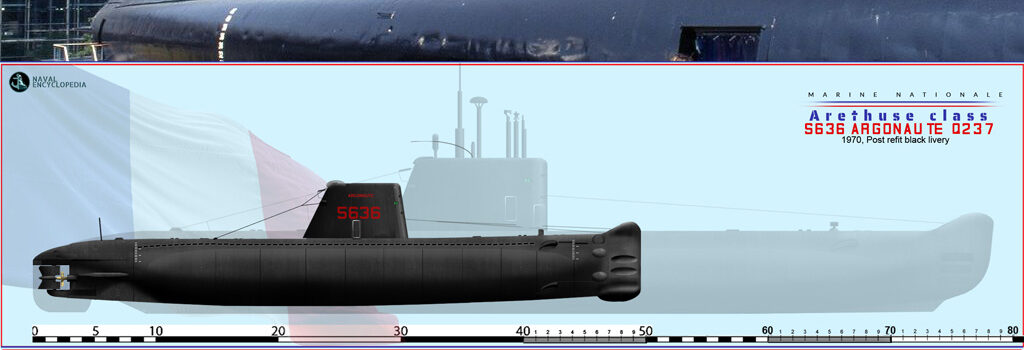
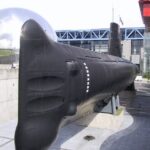
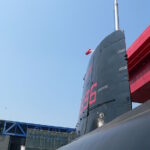
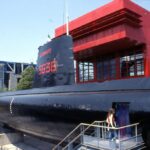
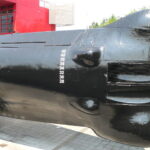
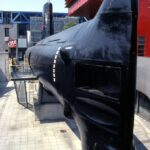
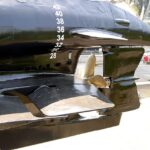
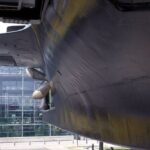
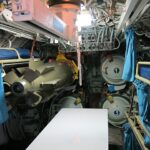
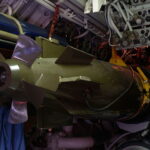
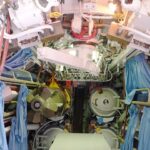
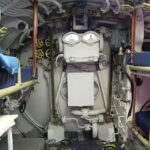
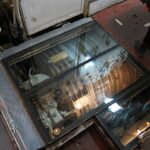
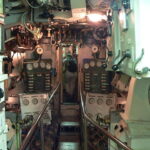
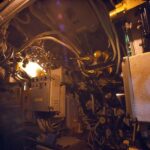
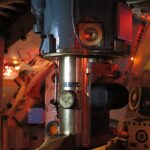
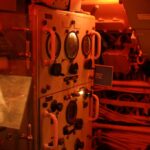
 Latest Facebook Entry -
Latest Facebook Entry -  X(Tweeter) Naval Encyclopedia's deck archive
X(Tweeter) Naval Encyclopedia's deck archive Instagram (@navalencyc)
Instagram (@navalencyc)





 French Navy
French Navy Royal Navy
Royal Navy Russian Navy
Russian Navy Armada Espanola
Armada Espanola Austrian Navy
Austrian Navy K.u.K. Kriegsmarine
K.u.K. Kriegsmarine Dansk Marine
Dansk Marine Nautiko Hellenon
Nautiko Hellenon Koninklije Marine 1870
Koninklije Marine 1870 Marinha do Brasil
Marinha do Brasil Osmanlı Donanması
Osmanlı Donanması Marina Do Peru
Marina Do Peru Marinha do Portugal
Marinha do Portugal Regia Marina 1870
Regia Marina 1870 Nihhon Kaigun 1870
Nihhon Kaigun 1870 Preußische Marine 1870
Preußische Marine 1870 Russkiy Flot 1870
Russkiy Flot 1870 Svenska marinen
Svenska marinen Søværnet
Søværnet Union Navy
Union Navy Confederate Navy
Confederate Navy Armada de Argentina
Armada de Argentina Imperial Chinese Navy
Imperial Chinese Navy Marinha do Portugal
Marinha do Portugal Mexico
Mexico Kaiserliche Marine
Kaiserliche Marine 1898 US Navy
1898 US Navy Sovietskiy Flot
Sovietskiy Flot Royal Canadian Navy
Royal Canadian Navy Royal Australian Navy
Royal Australian Navy RNZN Fleet
RNZN Fleet Chinese Navy 1937
Chinese Navy 1937 Kriegsmarine
Kriegsmarine Chilean Navy
Chilean Navy Danish Navy
Danish Navy Finnish Navy
Finnish Navy Hellenic Navy
Hellenic Navy Polish Navy
Polish Navy Romanian Navy
Romanian Navy Turkish Navy
Turkish Navy Royal Yugoslav Navy
Royal Yugoslav Navy Royal Thai Navy
Royal Thai Navy Minor Navies
Minor Navies Albania
Albania Austria
Austria Belgium
Belgium Columbia
Columbia Costa Rica
Costa Rica Cuba
Cuba Czechoslovakia
Czechoslovakia Dominican Republic
Dominican Republic Haiti
Haiti Hungary
Hungary Honduras
Honduras Estonia
Estonia Iceland
Iceland Eire
Eire Equador
Equador Iran
Iran Iraq
Iraq Latvia
Latvia Liberia
Liberia Lithuania
Lithuania Mandchukuo
Mandchukuo Morocco
Morocco Nicaragua
Nicaragua Persia
Persia San Salvador
San Salvador Sarawak
Sarawak Uruguay
Uruguay Venezuela
Venezuela Zanzibar
Zanzibar Warsaw Pact Navies
Warsaw Pact Navies Bulgaria
Bulgaria Hungary
Hungary

 Bundesmarine
Bundesmarine Dutch Navy
Dutch Navy Hellenic Navy
Hellenic Navy Marina Militare
Marina Militare Yugoslav Navy
Yugoslav Navy Chinese Navy
Chinese Navy Indian Navy
Indian Navy Indonesian Navy
Indonesian Navy JMSDF
JMSDF North Korean Navy
North Korean Navy Pakistani Navy
Pakistani Navy Philippines Navy
Philippines Navy ROKN
ROKN Rep. of Singapore Navy
Rep. of Singapore Navy Taiwanese Navy
Taiwanese Navy IDF Navy
IDF Navy Saudi Navy
Saudi Navy Royal New Zealand Navy
Royal New Zealand Navy Egyptian Navy
Egyptian Navy South African Navy
South African Navy






























 Ukrainian Navy
Ukrainian Navy dbodesign
dbodesign